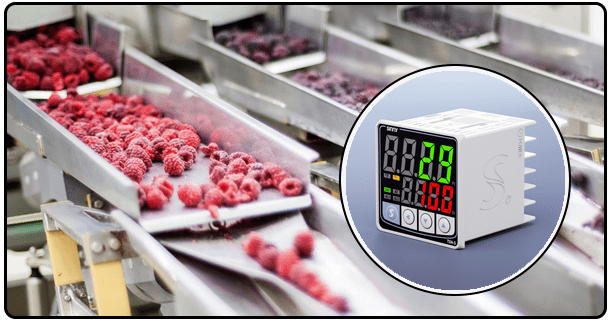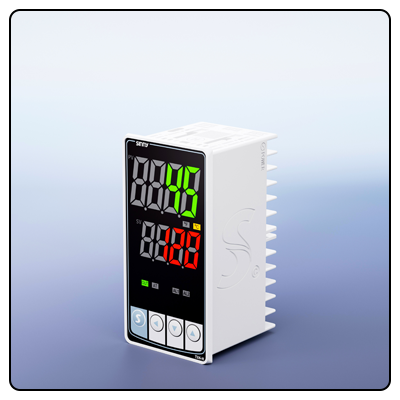How Does A Temperature Controller Maintain Temperature?
Discover the intricate workings of temperature controllers - devices essential to maintaining desired temperatures in various applications - while simultaneously learning their types, components, and methods for precise temperature regulation.
Temperature control is integral to various industries and applications, from manufacturing to home heating systems. Achieving consistent and optimal temperatures is vital to product quality and consistency, as well as comfort in living spaces and process efficiency; in this article, we investigate how temperature controllers function within defined spaces or systems to achieve this aim.
1. Introduction Temperature Controllers
Temperature controllers are devices used to manage the heating or cooling of systems to achieve desired environmental temperatures. From thermostats in our homes and businesses to intricate industrial oduction processes that ensure perfect temperatures are met, temperature controllers play a vital role in creating the desired environmental conditions we all desire.
2. Types of Temperature Control
Two key forms of temperature regulation exist - open-loop and closed-loop systems.
* Open Loop Control:
Open-loop control is an economical method whereby systems operate continuously without receiving feedback or providing control input from their actual temperature settings. In this method, the controller sends constant signals to heating or cooling elements, which operate regardless of their actual temperatures, resulting in temperature variations over time. Unfortunately, this approach produces inaccurate results that often lead to fluctuations.
* Closed Loop Control :
uses feedback to adjust heating or cooling output. A system monitors current temperatures against desired setpoint temperatures to make adjustments that keep temperatures close to their setpoint values as much as possible.
Components of a Temperature Controller
A temperature controller typically comprises several key elements. These include:
* Sensor:
Sensors measure the actual temperature within your system. Examples include thermocouples and resistance temperature detectors (RTDs).
* Setpoint:
The target temperature the system seeks to maintain; its value depends on your specific application requirements.
* Controller:
The controller acts as the brain of the system, receiving input from sensors to decide whether heating or cooling action is needed to reach the setpoint.
Operation of a Temperature Controller
Operation of a Temperature Controller Operating a temperature controller involves three steps.
1. Measuring:
The sensor continuously measures the current system temperature.
2. Comparing:
The controller compares each temperature reading from the sensor against its setpoint to ensure maximum comfort levels in your environment.
3. Actuating:
When the current temperature is irregularly higher than the setpoint temperature, a controller sends signals to activate heating or cooling elements accordingly.
3. Control Methods
Temperature controllers employ various strategies for maintaining their setpoint:
* ON/OFF Control:
An easy form of temperature regulation in which a simple on/off switch controls temperature by switching heating or cooling elements on and off when temperatures deviate from their setpoint, though its binary nature could result in oscillations around this goal.
* PID Control:
PID control is an advanced technique that utilizes Proportional, Integral, and Derivative calculations to bring actual temperature closer to desired setpoint values while keeping output stable and under control. Thus, it eliminates overshoot risk while creating more even temperatures overall.
4. Feedback Systems
Feedback Systems Feedback loops play an essential part in closed-loop control systems. By giving an informed view of actual system conditions, feedback enables a controller to make informed decisions based on real conditions within their environment or system (for instance, by opening up doors in heated rooms or adding cold ingredients during cooking processes). Feedback loops ensure the controller can react immediately to environmental or systemic changes, such as opening the door to let in cooling airflow or adding cold ingredients during an ingredient addition process.
Selecting a Temperature Controller
When selecting a temperature controller, it is crucial to consider the characteristics of the system being controlled. Factors like response time, thermal mass, and environmental conditions all play an integral part in choosing an apt type of controller and control method.
Understanding your system's thermal characteristics is also paramount. For instance, a system with a large thermal mass will respond slowly to changes in temperature, requiring different strategies than one with smaller thermal masses, which react more swiftly.
5. Conclusion
Temperature controllers are sophisticated devices that play an essential part in modern life, from manufacturing product quality control to comfort in our living spaces, and temperature controllers serve many important purposes. Understanding their principles helps us appreciate their complexity and importance for maintaining precise temperature regulation across various applications - whether quality assurance during production or comfort within living quarters - temperature controllers serve as unseen protectors of thermal environments everywhere they operate.























